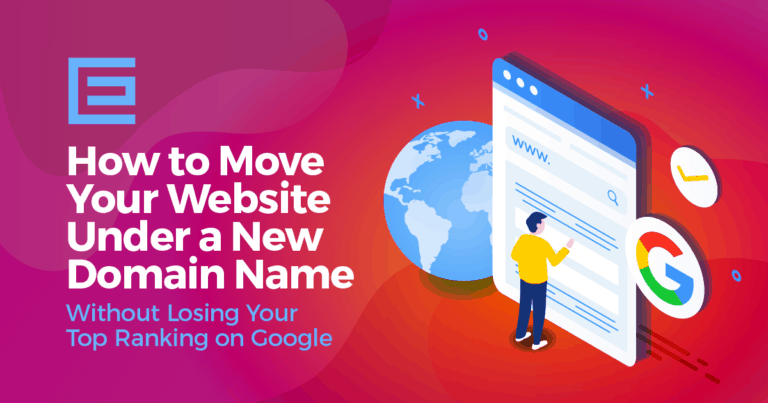Your Pay-Per-Click Strategy Is Not Working
1-Settings
Setting up your ad account is simple and does not take too much time, but if you do not have it properly configured it could affect the performance of your campaigns. Here are the most common mistakes made when setting up your pay per click campaign.-
- Type – When we perform PPC audits for clients, one of the first things we notice is they are associated with the wrong campaign type. You need to choose a campaign type that closely aligns with your marketing goals. Your campaign type can also determine where your ads can appear, types of ads you can create, and other customizable settings for your campaign.
- Search Network with Display Select– Allows you to reach people as they use Google search or visit sites from across the web.
- Search Network Only– Allows you to appear near Google search results and other Google sites when people search for terms that are relevant to your ad’s keywords
- Display Network Only– Allows you to show ads on websites and apps when your keywords are related to that site’s content.
-
- Locations– The location setting is also a common reason why campaigns are unsuccessful. We have seen it set to a huge radius in hopes of reaching more people. That could happen but it usually ends up in wasted ad spend. Instead, try getting very detailed with the location setting. Consider using GPS coordinates or also using zip codes to zero in on specific neighborhoods
- Ad Rotation– Ad rotation allows you to choose how often the ads are shown. The default settings are not always the best way to go. Google defaults you at Optimize for Clicks, which gives preference to ads that are expected to attract more clicks based on past click through rates. Through extensive testing, we have noticed that ads get served more often with the Rotate Indefinitely setting. Offering more impressions to allow for more clicks and conversions.
- Bid Strategy – Bid Strategy has always been an overlooked setting that most are confused about. Bid strategy determines how you pay for users to interact with your ads. You need to consider your goals.
-
- If you are wanting your users to complete a direct action, you should focus on conversions.
- If your goal is to increase brand awareness but not drive more traffic, focus your attention on impressions.
- If your goal is to drive more traffic to your website, gaining more clicks would be your focus.
2-Ad Extensions
Ads that get the least impressions and clicks are often due to the lack of additional information. If you would like to see your ad stand out more try ad extensions. Ad extensions are a type of ad format that shows additional information about your business which often improves visibility and increases the number of clicks by improving the click through rate.- The Most Commonly Used Ad Extensions:
-
- Sitelink Extensions – Additional links that you can add to your search ad.
- Callout Extensions – Provides additional detail and relevance to your ad.
- Structured Snippet Extension – Shows additional information about various categories of your site. Such as products or services you provide.
- Call Extension – Allows you to display your phone number within your ad.
- Location Extension – Displays your business address within the ad.
3-Negative Keywords
Negative keywords prevent your ad from being triggered by a certain word or phrase that doesn’t apply to your ad. For example, if you want to run an ad for your trucking company, you would want to use “jobs” as a negative keyword, so anyone searching for “trucking company jobs” won’t trigger your ad. Your ads are not shown to anyone searching for that phrase which helps lower the total cost. You should choose your negative keywords wisely though – using too many could cause your ad to not be served out as often.4-Call Only Ads
Call Only Ads usually appeal to the users further down the buying cycle that are ready to make a decision. These ads do not send users to a landing page. It displays your ad as a click to call ad with a phone number which are great for tracking phone calls.5-Remarketing Lists for Search Ads
Remarketing List for Search ads or RLSA lets you customize your search ads campaign for people who have previously visited your site. When people leave your site without buying anything, you can connect with these potential customers when they continue looking for what they need.6-Dynamic Search Ads
Do you have a well-developed website or a large inventory? Dynamic search ads can be a good solution for you. They target relevant searches with ads generated instantly from your website. For example, if you own an ice cream shop. Someone searches for “dairy free ice cream Raleigh” they will see your ad with the headline “Dairy Free Ice Cream – Raleigh” DSAs use content from your website to help create a compelling ad tailored to the user’s search.7-Dayparting
Another factor as to why your ads are failing and wasting money is because you are not targeting the time that people are searching. Day-parting or also known as Ad Scheduling allows you to turn ads on and off at specific times. For example, you can schedule your call only ads to run only while your business is open.8-Search Term Report
What if I told you that you could see the exact terms and words used to trigger your ad? This is actually a hidden gem that gets overlooked. Search Term Reporting allows you to see how your customers are finding your ad. You can see the actual searches people entered that triggered your ad and led to a click.9-Keyword Research
Without proper keyword research, you can wind with wasted time and ad spend on words that are not relevant to your marketing goals. There are many free and paid tools that you can use to perform keyword research. Some of the free third party resources allow you only to view a certain amount of information before you have to subscribe to their service. A great free resource to use is Google’s Keyword Planner. You can search for keyword and ad group ideas, see how they may perform and help you with the budgeting of your campaign.10-Target Audience
Getting unqualified and undesirable leads? Reach the right people with laser-focused targeting. Know and research your target audience. Develop campaigns and ads for each stage of your customer’s buying cycle. Once you know your target audience, get even more laser focused by using demographic targeting. You can reach a specific set of potential customers who are likely to be within a specific age range, gender, parental status, or household income.11-Ad Copy
If you are seeing an increase in impressions and a significant decrease or even no activity in clicks, You should consider changing your ad. Your ads should be specific, relevant, attractive, creative, and even thought provoking. Showcase what makes you unique. Use a clear and precise call to action. Include at least one of your keywords. Direct your ad to a relevant landing page. Create several ads per ad group to see which ad strategy works the best.12-Campaign Structure
A bad habit with some marketers is having a disorganized and cluttered pay per click account structure. If you are able to clean up your accounts and have a consistent structure not only will it be less chaotic looking but your campaign performance will also improve. We have seen great success with the Single Keyword Ad Group (SKAGs) campaign structure. This particular account layout has gained popularity over the past few years. SKAGs is a way for you to optimize your AdWords account. SKAGs allow you to have more control of bidding, improves click through rates, improves quality scores, and can lower cost.13-Conversion Tracking
Lastly, the biggest reason why campaigns fail is the lack of properly tracking your advertising efforts. One way to track your progress is through the use Conversion Tracking. Conversion tracking allows you to see what happens after someone clicks on your ad. You can see which keywords, ads, ad groups, and campaigns are performing best at driving activity. You can gain a better understanding of your ROI and make better decisions about your ad spend. You can also see how many people are interacting with your ad on various devices and browsers.Maximize Your PPC Campaign
Hopefully, by reading through this list, you were able to narrow down the reason why your pay per click strategy is not working. Implement these Ads tips and hacks to get your campaigns performing better with more impressions, clicks, and conversions.If your business needs help with pay per click marketing on any platform, reach out to a digital marketing professional at TheeDigital. Contact our Digital Marketing Strategists in Raleigh, NC at 919-341-8901 or Schedule a Complimentary Consultation and Website Review Today.
Tags: Paid Search Marketing





